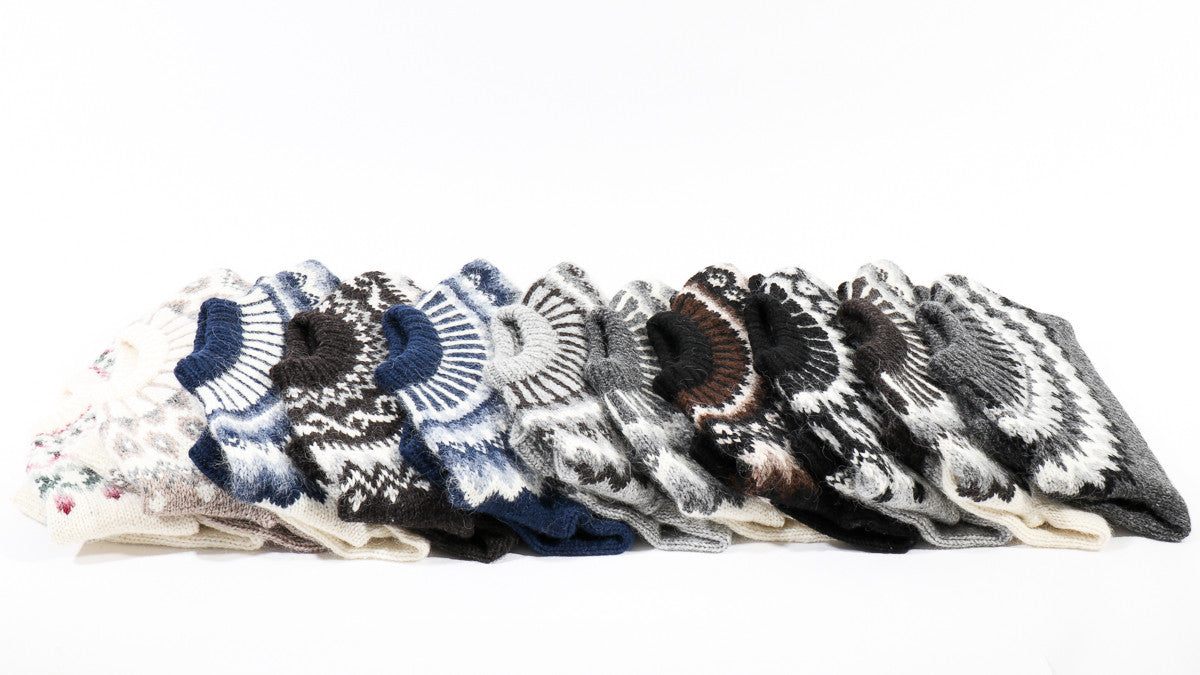Alafoss Lopi yarn
When you want to knit a sweater that is bulky yet lightweight at the same time, Alafoss Lopi yarn is the way to go. Knitting a sweater using this yarn takes a short while since the stiches build up quickly and this makes the circular needles most suited for this thread. The high performance of this yarn has seen its use being handed down through the generations. You will most probably find a picture or two of your younger days wearing a sweater made from this yarn
The unique nature of Alafoss Lopi yarn is accredited to the sheep breed from which it is harvested. Originating from Iceland, you can be sure that the wool is adequately adapted to harsh winter conditions. The Icelandic sheep wool has fibers that are loosely twisted and this result in the appearance of bulkiness. The fact that a small amount of fibers is present in an inch makes the yarn very light in weight.
The use of Alafoss Lopi yarn can be traced back to the early years of the 8th century and this at the time seemed like the normal material to use because animals were used to provide for all clothing needs. Over the years it has been in use, it has evolved severally as the climatic conditions change.
Knitting with the Alafoss Lopi yarn requires the use of the correct tools because of the bulk of the threads. In cases where the circular needle is not being used, it is recommended to use needles that are relatively blunt at the edges. The idea is to reduce the incidents of yarn snagging and once this has been achieved, knitting flows swiftly and easily.
Even if you would like to knit a sweater that is extra warm, there is no need of doubling the yarn as some people do. A single strand of Alafoss Lopi yarn is composed of two strands which are delicately twisted together. This provides the yarn with additional properties of volume, strength and uniformity in the final product.
To clean for a sweater made from Alafoss Lopi yarn, using the hands is the only recommended mode of cleaning. Lukewarm water should be used to loosen the dirt because rubbing and scrubbing actions typical in the cleaning of synthetic fibers is not advised. To avoid discoloration of the wool and denaturation the fibers, mild soap should be added to the cleaning water. Drying should be on a flat surface to maintain the shape of the sweater as hanging on a line results in uneven stretching that will lead to alterations in size measurements.



4 comments
I couldn’t find any company in the UK that had a stock of Lopi wool in the colour I wanted, to knit a sweater for my husband. I found your site, ordered the wool and I received it four days later! Thank you so much for rescuing me. It is such lovely wool to knit with and I hope to be able to do another sweater in a different pattern soon.
Regards,
Sheena in England
Sheena Brown
I’m trying to knit pattern ( in medium) number 3 in Lopi booklet No. 23 and don’t understand how to read the chart 1 (is the bottom of the sweater). Where do I begin the body pattern for a size medium?
Alison Glass
I desperately need 1 ball of Alafosslopi colour 0159 lot 0718 to complete a sweater. I found a ball of 0159 on line but the lot and shade were very different. I am hoping you might have a ball .
Thank you.
Anne
Anne Hildebrandt
Hello!
I love my Lopi sweater purchased in Iceland but now it is time for a bit of care: I do not need to wash it, but do want to remove the bits of yarn fluff (“pilling”?) happening on some areas – especially the underside of sleeves and across the lower front body.
Is there a method you recommend?
Thank you for your advice!
keep warm and safe from the Covid virus!
Regards,
Rheta in Canada
Rheta
Leave a comment
This site is protected by hCaptcha and the hCaptcha Privacy Policy and Terms of Service apply.